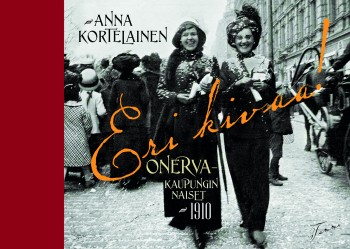Tag: biography
Martti Anhava: Romua rakkauden valtatiellä. Arto Mellerin elämä [Garbage on the highway of love. The life of Arto Melleri]
10 November 2011 | Mini reviews, Reviews
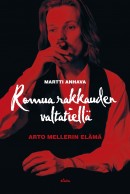 Romua rakkauden valtatiellä. Arto Mellerin elämä
Romua rakkauden valtatiellä. Arto Mellerin elämä
[Garbage on the highway of love. The life of Arto Melleri]
Helsinki: Otava, 2011. 687 p., ill.
ISBN 976-951-1-23700-6
€ 36, hardback
Arto Melleri (1956–2005) has been called the last Finnish bohemian poet. At the age of 35, he received the Finlandia Prize for a collection of poetry entitled Elävien kirjoissa (‘In the books of the living’) as well as an invitation to the Independence Day celebrations at the Presidential Palace, from which he was thrown out. The literary editor Martti Anhava traces his friend’s life from his schooldays in Ostrobothnia to his turbulent life in Helsinki. There are interviews with family members, friends, writers, musicians, theatre-makers; Melleri wound up studying dramaturgy at the Theatre Academy. The year 1978 saw the presentation of Melleri, Jukka Asikainen and Heikki Vuento’s play Nuorallatanssijan kuolema eli kuinka Pete Q sai siivet (‘The death of a tightrope walker or how Pete Q got wings’). Breaking completely with the mainstream political theatre of the 1970s, it became a cult show. The last volume by this poet of bold, often cruelly romantic visions was Arpinen rakkauden soturi (‘The scarred soldier of love’, 2004).
Translated by Hildi Hawkins
Matti Salminen: Yrjö Kallisen elämä ja totuus [The life and truth of Yrjö Kallinen]
15 September 2011 | Mini reviews, Reviews
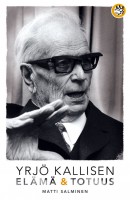 Yrjö Kallisen elämä ja totuus
Yrjö Kallisen elämä ja totuus
[The life and truth of Yrjö Kallinen]
Helsinki: Like Kustannus, 2011. 271 p., ill.
ISBN 978-952-01-0612-6
€ 27, hardback
Counsellor of Education Yrjö Kallinen (1886–1976) was a Social Democrat politician, a passionate speaker and a pacifist who served for one parliamentary term as an MP and for two years as a cabinet minister. Kallinen was a working-class man who independently acquired a broad general education. His life and thought contain many paradoxes and contradictions. In the Civil War (1918) he received four death sentences, though he tried to act as a peace-broker between the Whites and the Reds. Kallinen avoided the death penalty but suffered a long prison sentence. After the Second World War he became Minister of Defence, though in spite of holding the post he did not abandon his pacifism. Kallinen was also strongly influenced by oriental religions and theosophy, and he is known as an early advocate of vegetarianism. The most important sources for this biography are Yrjö Kallinen’s own writings, many of which have never been published before, and his recently discovered correspondence. The summaries of Kallinen’s interviews for foreign newspapers open up interesting perspectives on recent Finnish political history.
Translated by David McDuff
Jean Sibelius kodissaan. Jean Sibelius, i sitt hem. Jean Sibelius at home
19 August 2011 | Mini reviews, Reviews
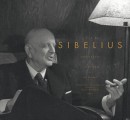 Jean Sibelius kodissaan. Jean Sibelius, i sitt hem. Jean Sibelius at home
Jean Sibelius kodissaan. Jean Sibelius, i sitt hem. Jean Sibelius at home
Toimittanut [Edited by] Jussi Brofeldt
Helsinki: Teos, 2010. 103 p., ill.
ISBN 978-951-851-364-6
€ 29, hardback
The composer Jean Sibelius (1865–1957) disliked being photographed. This book contains 50 stills selected from the documentary film Jean Sibelius at home, a compilation of cinematographic material in which the composer is seen at home in 1927 and 1945. Some of the shots were originally cut, and have not been previously published. The film was made by the brothers Heikki Aho and Björn Soldan, who were neighbours of Sibelius in their childhood – their father was the author Juhani Aho, a friend of the Sibelius family. Founded in the 1920s, the film company Aho & Soldan was influenced by the experimental spirit of the Bauhaus and became known for its commissioned work aimed at spreading the image of Finland abroad. The Sibelius film offers a rare peek into the composer’s home life at his villa of Ainola. In addition to the photographs, the trilingual book also contains seven articles on Sibelius and the film. Heikki Aho’s daughter, the pioneer photographer Claire Aho relates her own memories of the 1945 filming. Jussi Brofeldt, the book’s editor, is her son.
Translated by David McDuff
Aamu Nyström: I.K. Inha – Valokuvaaja, kirjailija, kulttuurin löytöretkeilijä [I.K. Inha – Photographer, writer, cultural explorer]
3 August 2011 | Mini reviews, Reviews
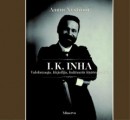 I.K. Inha – Valokuvaaja, kirjailija, kulttuurin löytöretkeilijä
I.K. Inha – Valokuvaaja, kirjailija, kulttuurin löytöretkeilijä
[I.K. Inha – Photographer, writer, cultural explorer]
Jyväskylä: Minerva, 2011. 271 p., ill.
ISBN 978-952-492-441-2
€ 31, hardback
I.K. Inha (1865–1930) was a photographer, a writer, a translator and a journalist. He is known particularly for his photographic journeys in Finland and Russian Karelia. Both the texts and the photographs in Inha’s landscape and nature works are of a high aesthetic standard. This book focuses on Inha’s lesser-known works and the various phases of his life. Inha’s travel diary documents the cycle journey he made as a student in 1886 to Germany and Switzerland. In 1897 Inha was appointed Finland’s first-ever foreign correspondent; from Athens he reported on events such as the Greco-Turkish War. In 1899 and 1901 Inha was posted to England, where he observed Queen Victoria’s funeral and the coronation of King Edward VII. Aamu Nyström, the niece of Inha’s brother, has had access to letters, photographs and written and oral recollections of family members.
Translated by Ruth Urbom
Päivi Jantunen: Kaj & Franck. Esineitä ja lähikuvia / Designs & Impressions
6 July 2011 | Mini reviews, Reviews
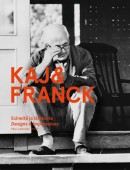 Kaj & Franck. Esineitä ja lähikuvia. / Designs & Impressions
Kaj & Franck. Esineitä ja lähikuvia. / Designs & Impressions
English translations: Peter Herring and Esa Lehtinen
Helsinki: WSOY, 2011. 166 p., ill.
ISBN 978-951-0-36898-5
€ 42, hardback
This dual-language book showcases the work of one of Finland’s most widely known glass and ceramic designers in his centenary year. The unaffected designs and clean geometric shapes of the tableware designed by Kaj Franck (1911–1989) are well suited to a wide range of cultures. Franck’s guiding principle was to create anonymous, self-evident objects for everyday use. In the 1940s and 1950s, Franck updated tableware to match post-war changes in society; he wanted to get away from the sets of crockery that filled up smaller kitchen cupboards. His designs that emphasised environmental principles and equality were ahead of their time with their ideology of sustainable development. This book portrays Franck’s life and career, which centred on the oldest glassworks in Finland in the community of Nuutajärvi, where he worked from the early 1950s until his death. Interviews with local residents and Franck’s colleagues create a portrait of him as a colourful personality. Ample illustrations provide a cross-section of Franck’s design output. In addition to his mass-produced items, there are photos of Franck’s one-off artistic creations.
Translated by Ruth Urbom
Teemu Keskisarja: Vihreän kullan kirous. G.A. Serlachiuksen elämä ja afäärit [The curse of green gold. The life and affairs of G.A. Serlachius]
17 March 2011 | Mini reviews, Reviews
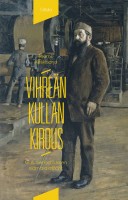 Vihreän kullan kirous. G.A. Serlachiuksen elämä ja afäärit
Vihreän kullan kirous. G.A. Serlachiuksen elämä ja afäärit
[The curse of green gold. The life and affairs of G.A. Serlachius]
Helsinki: Kustannusosakeyhtiö Siltala, 2010. 350 p., ill.
ISBN 978-952-234-041-2
€ 35, hardback
In the famine years of the 1860s and with no inherited fortune to his name, G.A. Serlachius (1830–1901) built his industrial centre in the rural backwoods of Mänttä. His work laid the foundations for what would become one of Europe’s leading paper manufacturers. G.A. Serlachius was a Finnish self-made man whose education was cut short due to his family’s financial difficulties. The energetic Serlachius is considered to have pioneered contacts with Western European markets; he was responsible for bringing the first icebreaker ship to Finland. Serlachius was also known as a patron of the arts and a supporter of artists; the collection of the Serlachius Art Foundation is his best-known legacy. According to this biography, Serlachius suffered from ‘an extremely advanced megalomania’ in the opinion of his bankers, and his personality was ‘more aggressive than many Finnish-born generals of the Pax Russica’. The Association of the Friends of History selected this book as its History Book of the Year for 2010.
Translated by Ruth Urbom
Vesa Sirén: Suomalaiset kapellimestarit. Sibeliuksesta Saloseen, Kajanuksesta Franckiin [Finnish conductors. From Sibelius to Salonen and from Kajanus to Franck]
17 February 2011 | Mini reviews, Reviews
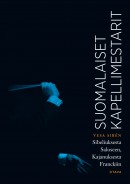 Suomalaiset kapellimestarit. Sibeliuksesta Saloseen, Kajanuksesta Franckiin
Suomalaiset kapellimestarit. Sibeliuksesta Saloseen, Kajanuksesta Franckiin
[Finnish conductors. From Sibelius to Salonen and from Kajanus to Franck]
Helsinki: Otava, 2010. 1,000 p., ill.
ISBN 978-951-1-21203-1
€ 38, hardback
This work, by music critic Vesa Sirén – awarded the Finlandia Prize for non-fiction in 2010 – attempts to explain what makes a good orchestra conductor. Including hundreds of interviews, the book takes a chronological approach, presenting portraits of sixty conductors from the 1880s up to current students of conducting. There are also contributions from music critics, as well as even tougher assessments from musicians, contemporaries of the conductors. The high standard of Finnish music education, which has been easily accessible to young people – at least until the recent times –, provides part of the answer, as does the conducting course at the Sibelius Academy under the long-serving leadership of Jorma Panula. Sirén’s archival research has unearthed some forgotten treasures, including the lost archives of Robert Kajanus and conductor’s notes in Jean Sibelius’ own handwriting.
Translated by Ruth Urbom
Gustaf Mannerheim: Dagbok förd under min resa i Centralasien och Kina 1906–07–08 [Journal of my travels in Central Asia and China 1906–07–08]
11 February 2011 | Mini reviews, Reviews
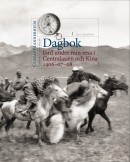 Dagbok förd under min resa i Centralasien och Kina 1906–07–08, Vol 1–3
Dagbok förd under min resa i Centralasien och Kina 1906–07–08, Vol 1–3
[Journal of my travels in Central Asia and China 1906–07–08, Vol. 1–3]
Redaktör [Edited by]: Harry Halén
Bildredaktör [Photo editor]: Peter Sandberg
Helsingfors: Svenska litteratursällskapet i Finland, 2010. 1,128 p., ill.
ISBN 978-951-583-196-5 (complete set)
€ 80, hardback
Carl Gustaf Mannerheim (1867–1951), a Finnish officer in the Imperial Russian Army, later Commander-in-Chief of the Finnish Army and President of Finland, undertook a military reconnaissance mission, posing as an academic researcher, to Central Asia and China in 1906–1908. His journey on horseback across Asia to Peking also generated a wealth of ethnographic material: field notes, photographs and artefacts. In his travel diaries, Mannerheim describes the landscapes as well as his diverse encounters with the inhabitants of the areas he travelled through. During his visit to a Tibetan monastery, Mannerheim was pelted with stones by pilgrims. He gave the Dalai Lama an automatic pistol as a gift. These journals are now being published in full for the first time in their original language, Swedish, including Mannerheim’s own notes concerning his military mission. The photographs, some of which have never been published before, show that Mannerheim was a skilled photographer. Harry Halén, an expert in Central Asian languages and cultures, has contributed an extensive preface and copious notes.
Translated by Ruth Urbom
Högtärade Maestro! Högtärade Herr Baron! [Correspondence between Axel Carpelan and Jean Sibelius,1900–1919]
17 December 2010 | Mini reviews, Reviews
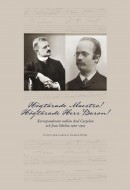 Högtärade Maestro! Högtärade Herr Baron! Korrespondensen mellan Axel Carpelan och Jean Sibelius 1900–1919
Högtärade Maestro! Högtärade Herr Baron! Korrespondensen mellan Axel Carpelan och Jean Sibelius 1900–1919
[My dear Maestro! My dear Herr Baron! Correspondence between Axel Carpelan and Jean Sibelius, 1900–1919]
Red. [Ed. by] Fabian Dahlström
Helsinki: Svenska litteratursällskapet i Finland, 2010. 549 p., ill.
ISBN 978-951-583-200-9
€40, hardback
‘For whom shall I compose now?’ wrote Finnish composer Jean Sibelius in his diary upon hearing of the death of his good friend Axel Carpelan (1858 –1919). Carpelan was a penniless baron, who considered music and his friendship with Sibelius to be the most vital aspects of his life. Using his natural-born talent and instinct, he gained acceptance as Sibelius’ trusted musical confidant, to whom the composer dedicated his second symphony. Axel came to be known by the wider public in 1986, when his great-nephew, the author Bo Carpelan, made him the protagonist of his award-winning novel entitled simply Axel. This volume, edited by Fabian Dahlström, contains the surviving Swedish-language correspondence between Sibelius and Carpelan, as well as letters to Sibelius’ wife, Aino. Carpelan wrote to her when the composer was too busy. These letters contain interesting details such as Aino Sibelius’ account of the origins of her husband’s violin concerto. The comprehensive foreword to this book sheds additional light on Carpelan’s life.
Panu Rajala: Lasinkirkas, hullunrohkea [Glass-clear, daredevil]
20 May 2010 | Mini reviews, Reviews
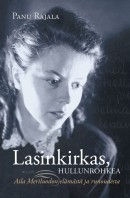 Lasinkirkas, hullunrohkea. Aila Meriluodon elämästä ja runoudesta
Lasinkirkas, hullunrohkea. Aila Meriluodon elämästä ja runoudesta
[Glass-clear, daredevil]
Helsinki: WSOY, 2010. 417 p., ill.
ISBN 978-951-0-35488-9
€39, hardback
Aila Meriluoto (born 1924) is a poet, author and translator whose first collection of poems, entitled Lasimaalaus (‘Stained glass’), sold more than 25,000 copies in 1946. She became a celebrity of her time, as her young, fresh voice expressed post-symbolist visions and, after the long, cruel years of the war, spoke defiantly about the death of God. Hailed as a youthful prodigy, she was favoured by the dominant poet and professor of literature, V.A. Koskenniemi. Meriluoto has published ten collections of poems, as well as novels, children’s books, diaries, memoirs, and a book about her first husband, the poet and author Lauri Viita (1916–1965). She has translated works by Rainer Maria Rilke, Harry Martinson and Astrid Lindgren. This biography tends to concentrate on the writer’s personal history rather than on her works. The author and scholar Panu Rajala and Meriluoto became acquainted in the 1970s, and he calls his biography ‘a subjective testimonial’. Rajala has written plays, novels and film scripts as well as biographies, among them one of the classic author Mika Waltari (1908–1979).
Women and the city
17 April 2010 | This 'n' that
How was city life for the single woman a hundred years ago in Helsinki?
She could ride a bike, for example, provided it was equipped with an ‘alarm system’ and the speed was not high. Socially she could have fun as long as she obeyed the rules. No admittance to restaurants without male company, for example.
Some young women in those days had to make a living by teaching or by working in an office – before they got married, of course.
A new exhibition (25 March–29 August) at Helsinki’s Ateneum art museum, entitled Kaupungin naiset (‘Women of the city’), focuses on the cultural life of young women in Helsinki in the 1910s through the eyes of the writer and critic L. Onerva (aka Hilja Onerva Lehtinen, 1882–1972). More…
Eero ja Saimi Järnefeltin kirjeenvaihtoa ja päiväkirjamerkintöjä 1889–1914 [Eero and Saimi Järnefelt: Correspondence and diary entries, 1889–1914]
12 March 2010 | Mini reviews, Reviews
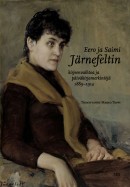 Eero ja Saimi Järnefeltin kirjeenvaihtoa ja päiväkirjamerkintöjä 1889–1914
Eero ja Saimi Järnefeltin kirjeenvaihtoa ja päiväkirjamerkintöjä 1889–1914
[Eero and Saimi Järnefelt: Correspondence and diary entries, 1889–1914]
Toim. [Ed. by] Marko Toppi
Helsinki: Suomalaisen Kirjallisuuden Seura, 2009. 403 p., ill.
ISBN 978-952-222-113-1
€ 38, hardback
The actress Saimi Swan (1867–1944) and painter Eero Järnefelt (1863–1937) were both born into prominent Finnish families united by similar creative and cultural ideals. The book consists mainly of correspondence between the couple, beginning with their engagement in 1890, and their diary entries up to 1914. Eero Järnefelt’s letters from Paris and Rome provide fascinating glimpses into personal relationships, discussions on artistic practices and aims, and political movements from the golden era of Finnish art. Saimi Järnefelt’s letters illuminate the conflict she experienced between her career and family life. She had to keep her engagement secret in order to safeguard her career; once married, Saimi Järnefelt left the theatre. In letters written to her sister-in-law Aino Sibelius – the wife of composer Jean Sibelius – Saimi Järnefelt often described the cycle of the seasons in her garden: gardening was a hobby the two women shared, in which their need for self-expression could find an outlet.
Minä, Mauri Kunnas [I, Mauri Kunnas]
4 March 2010 | Mini reviews, Reviews
 Minä, Mauri Kunnas
Minä, Mauri Kunnas
[I, Mauri Kunnas]
Muistiin merkitsi [As told to] Lotta Sonninen
Helsinki: Otava, 2009. 182 p., ill.
ISBN 978-951-1-23186-8
€ 40, hardback
Mauri Kunnas (born 1950) is a cartoonist and graphic artist. His children’s books have been translated into 28 languages; the translations have sold approximately 2,5 million copies. His anthropomorphic canine characters from Koiramäki, Doghill, are well known for their adventures in historical milieus; researching these settings is one of Kunnas’ passions. His reinterpretations of Finnish literary classics are also popular: The Canine Kalevala and Seven Dog Brothers offer affectionately humorous homages to the Kalevala, the Finnish folk epic, and the classic novel by Aleksis Kivi. Joulupukki (1981), published in English as Santa Claus, is arguably the world’s best-known Finnish children’s book. In this book, Kunnas gives a lively account of his childhood and youth, as well as his influences and the different phases of his career as an illustrator. The text is complemented by photos from Kunnas’ family album and his own archives, from adventure stories he illustrated as a boy to a pair of hippy bell-bottomed jeans adorned with doodles.
John Simon: Koneen ruhtinas. Pekka Herlinin elämä [The Prince of Kone. The life of Pekka Herlin]
15 January 2010 | Mini reviews, Reviews
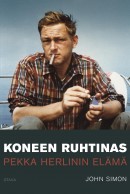 Koneen ruhtinas. Pekka Herlinin elämä
Koneen ruhtinas. Pekka Herlinin elämä
[The Prince of Kone. The life of Pekka Herlin]
Finnish translation of original English manuscript completed by various translators in collaboration with the author
Helsinki: Otava, 2009. 415 p., ill.
ISBN 978-951-1-23478-4
€ 33, hardback
Pekka Herlin (1932–2003) was the long-serving chairman of the board of the Kone lift and escalator company. During Herlin’s tenure, Kone completed a number of corporate acquisitions to become a major global corporation. John Simon, an American writer and researcher, takes an unusually honest and direct approach; the project was undertaken at the request of Antti Herlin, the current chairman of the board at Kone and son of Pekka Herlin. Pekka Herlin was known for being both gregarious and a cool-headed business strategist, but his irascible, unorthodox nature was familiar to many as well. Within his family he emerged as a tyrannical alcoholic with a severely disturbed personality, feared by his children. John Simon interviewed a great many people who knew Pekka Herlin personally, including members of Herlin’s immediate family. This biography was Finland’s best-selling non-fiction book in the autumn of 2009.
Glenda Goss Dawn: Vieläkö lähetämme hänelle sikareja? [Do we still send him cigars?]
30 December 2009 | Mini reviews, Reviews
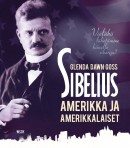 Vieläkö lähetämme hänelle sikareja? Sibelius, Amerikka ja amerikkalaiset. 24 tarinaa
Vieläkö lähetämme hänelle sikareja? Sibelius, Amerikka ja amerikkalaiset. 24 tarinaa
[Do we still send him cigars? Sibelius, America and Americans: 24 stories]
Translated into Finnish (from the manuscript) by Martti Haapakoski
Helsinki: WSOY, 2009. 268 p., ill.
ISBN 978-951-0-35517-6
€ 35, paperback
Finnish composer Jean Sibelius (1865–1957) was very highly regarded in the United States; the world’s first Sibelius appreciation society was set up in a small town in Pennsylvania, and at one time there was even a sort of Sibelius cult in Boston. In 1935 American radio listeners voted Sibelius their favourite living composer of symphonies. Walt Disney was an admirer of Sibelius’ music, though his plan to transfer The Swan of Tuonela to the big screen was never realised. Sibelius’ affinity for fine cigars was widely known, and sending boxes of cigars to the composer became a typical expression of admiration among Americans. Cigars were sent by regular citizens as well as prominent figures like Louis Armstrong. This book consists of 24 accounts describing interactions between Sibelius and Americans. It also details rises and falls in Sibelius’ popularity.Glenda Dawn Goss, is an American expert on Sibelius and possesses a doctorate in musicology. She has lectured at the Sibelius Academy in Helsinki since 2007.

